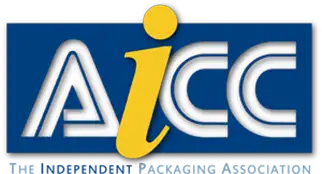There can be no denying that, even considering the pandemic, subscription services continue to see growth. Now more than ever, with people staying home more, people are more open to seeing what is available to them in the world of subscriptions. And so, drilling down, the paperboard packaging market should experience growth as well as challenges in various end-use market segments.
Growing Demand for Frozen Food: The frozen food market has struggled for many years as consumers trended toward healthier, on-the-go food options. However, demand has recently begun to thaw, with carton shipments on the rise.
Several factors have contributed to this resurgence in frozen food purchasing, including:
- Higher rates of employment — more work means less time at home for meal preparation, so consumers are reaching for quick and easy food options; Now, this one element may be completely out then window due to COVID-19, so we are going to reserve judgement on this one.
- Millennial lifestyles — younger consumers are waiting to create families and often do not take time to make fresh meals; and
- Dietary changes — the American public trends toward eating well, including options with higher amounts of protein and vegetables, and is more receptive to the increasingly healthier frozen options available today.
With all these factors in mind, folding carton shipments to the frozen foods market are expected to grow at a healthy 1.2% per annum over the next five years.
Sustainability at Retail Carryout: With declining consumer sentiment toward single-use plastic packaging at carryout restaurants, sustainable and renewable paperboard packaging is poised to fill the gap.
Many restaurants have opted for branded containers as they package more and more carry out packages for curbside pickup and delivery options.
A look at the top carryout chains in the U.S. is telling. McDonald’s plans to use renewable, recycled, or certified sources for all packaging by 2025. Dunkin’ (Donuts) started eliminating polystyrene foam cups from its global supply chain in the spring of 2018, with a 2020 target date of completion. They are being replaced with double-walled paper cups. This step falls in line with the company’s commitments in the U.S. to have 80% of fiber-based packaging, certified by the Sustainable Forestry Initiative Standard, by the end of 2018. Most recently, Taco Bell announced it would ensure all its packaging is recyclable or compostable by 2025.
Considering these shifts, and presumably more to come, folding carton shipments to retail carryout will be the fastest-growing end-use segment over the horizon, with growth estimated at around 1.7% between 2019 and 2023.
Changes in the Digital Marketplace: As the ecommerce marketplace continues to grow, packaging manufacturers will need to account for digital customers and their purchasing habits, especially in dry food and household supply markets.
People have grown accustomed to the digital retail model, and the acquisition of Whole Foods Market by Amazon has provided additional momentum. Beyond groceries, consumers are turning to e-commerce for home tools and appliances. Online shopping’s convenience, competitive prices and variety have all enhanced ecommerce sales.
This said, manufacturers might not necessarily find this beneficial. Ecommerce sales in the cereal and household supplies markets will limit the growth of folding carton shipments, increasing the share of corrugated boxes in the long run. Carton shipments to these sectors will likely contract over the next five years as packaging demands shift toward the needs of e-commerce rather than in-store shelves.
Packaging Design is uniquely equipped to help you with design, implementation, and execution of whatever kind of corrugated packaging system you need. We are here to help!





